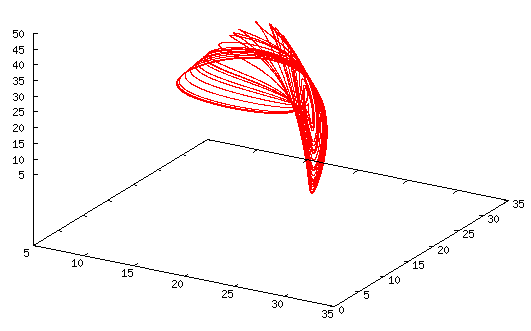
Typical strange attractor exhibited by this system.
Aziz-Alaoui M.A.
Labo. Math., Le Havre University
Chaos Sol. Fractals, Vol. 13(5), pp 1099-1113 (2002).
http://www.elsevier.com/gej-ng/10/14/11/63/36/show/toc.htt

Typical strange attractor exhibited by this system.
![]() Back to the previous page
Back to the previous page
Back to Aziz Alaoui's home page